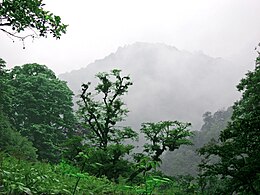Un article de Wikipédia, l'encyclopédie libre.
Forêt de feuillus dans la province de Gilan. Géographie et climat
| Superficie : |
|
Données clés
| min. | max. |
| Altitude : |
−28 m |
4 670 m |
| Température : |
−12 °C |
30 °C |
| Précipitations : |
0 mm |
318 mm |
Localisation
modifier 
|
|
|
Les forêts mixtes hyrcaniennes de la Caspienne forment une écorégion terrestre définie par le Fonds mondial pour la nature (WWF), qui recouvre les monts Talysh du Sud de l'Azerbaïdjan ainsi que le littoral iranien de la mer Caspienne (province antique de l'Hyrcanie). Elles appartiennent au biome des forêts de feuillus et forêts mixtes tempérées de l'écozone paléarctique. La région constitue une étape importante pour les oiseaux migrateurs entre la Russie et l'Afrique.
Les forêts hyrcaniennes en Iran sont classées au patrimoine mondial par l'UNESCO en 2019[1]. Celles d'Azerbaïdjan le sont en 2023.


